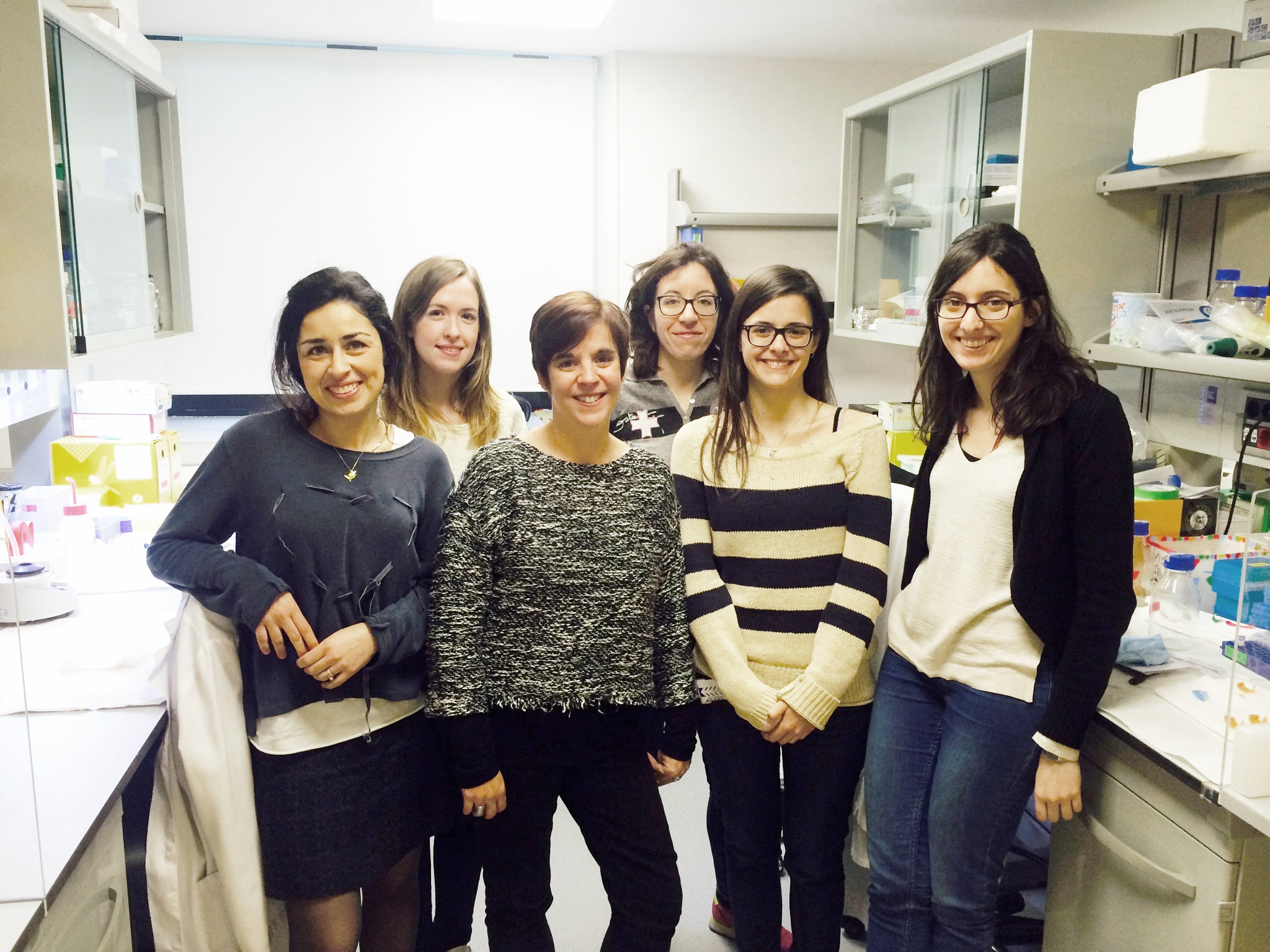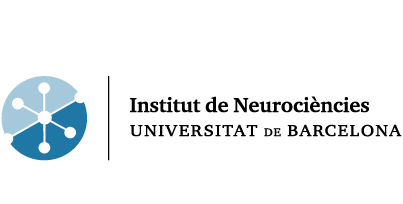
SILVIA GINES PADROS
Position: Associate Professor
Research team
Nuria Suelves Caballol
Early stage researcher
nuriasuelves (at) ub.edu
Anika Pupak
Early stage researcher
Albert Giralt Torroella
Postdoctoral researcher
Veronica Brito
Collaborator
veronica.brito (at) ub.edu
Elena Alvarez Periel
Collaborator
ealvarezp (at) ub.edu
Contact details
Dr. Silvia Gines Padros
Department of Biomedicine
Faculty of Medicine. C/ Casanova 143
08036 Barcelona (Spain)
93-4035284
silviagines (at) ub.edu
Research Interests
Dr. Silvia Gines´s research interest focuses in understanding the molecular mechanisms Huntington´s disease (HD) pathology. HD is an autosomal-dominant inherited neurodegenerative disorder, classically characterized by progressive motor deficits and commonly associated to striatal neurodegeneration. However, decades of research have long-established that psychiatric alterations and cognitive function declines in the pre-manifest and early stages of HD, years before motor symptoms appear. Therefore, the “perfect” therapeutic strategy will be one in which by targeting a single molecule or a specific pathway, early memory and emotional disturbances could be ameliorated while motor progression slowed or prevented.
In searching for this “perfect target” we have focused on three main projects:
1. Divergent roles of p75NTR and TrkB on neuroprotection and cognition.
Neurotrophins play a critical role in neuroprotection and synaptic plasticity. Among the different neurotrophins BDNF is the best characterized for its role in regulating both neuronal activity and survival. Our lab has demonstrated altered expression of BDNF-receptors, TrkB and p75NTR, in HD mouse models and HD human brain associated with loss of BDNF function. Based on these results, we are working on the hypothesis that BDNF neuroprotective approaches should target BDNF signalling instead of BDNF delivery by integrating inhibition of p75NTR and activation of TrkB.
2. Cdk5 as a pharmacological target to treat neuropsychiatric, cognitive and motor impairments
Cdk5 is a serine/threonine kinase with high activity in the central nervous system which activity is critical for different neuronal functions. In addition to its physiologic actions, aberrant Cdk5 activity is an important determinant in neuronal dysfunction associated to neurodegenerative and neuropsychiatric diseases. We are focused on designing new therapies targeting Cdk5 activity as an overall treatment to prevent or ameliorate motor, cognitive and depressive symptoms in HD.
3. Therapeutic benefits of HDAC inhibition to treat HD cognitive and memory decline.
Histone deacetylases (HDAC) have been implicated in HD as enforcing transcriptional aberrations that help cause cognitive and memory impairments. We use HD mice to evaluate therapeutic benefits of HDAC-selective inhibitors. These inhibitors are predicted to have dual efficacy, both stabilizing CAG repeats at the HD gene and also improving long-term memory.
Current Research Lines
- TrkB and p75 receptors in HD: Divergent roles in neuroprotection and cognition.
- Cdk5 pathway in HD: Cell death inductor and modulator of synaptic plasticity
- Transcriptional deficits: Role of HDAC inhibitors
- Role of the dopaminergic system in depression
- Cortical dysfunction as an early event in HD
Technologies / methods
- Biochemistry and Cell Biology: Primary cultures of striatal, cortical and hippocampal neurons, recombinant protein expression, purification of synaptosomes (pre- and postsynaptic fractions), protein interaction studies.
- Morphological studies: DiOlistic Gene Gun or Golgi staining techniques to analyze dendritic spine density and morphology.
- Stereotaxic injection of viruses or drugs in specific brain regions.
- Production of new transgenic or knockout mice and behavioral analysis: Analysis of cortico-striatal and hippocampal dependent tasks by using specific behavioral tests (Morris Water maze, Novel object location and recognition, Passive avoidance, T-maze, accelarting rotarod, fixed rotarod).
Highlighted publications
· Giralt A, Brito V, Chevy Q, Simonnet C, Otsu Y, Cifuentes-Díaz C, de Pins B, Coura R, Alberch J, Ginés S, Poncer JC, Girault JA. Pyk2 modulates hippocampal excitatory synapses and contributes to cognitive deficits in a Huntington’s disease model. Nat Commun. 2017 May 30;8:15592. doi: 10.1038/ncomms15592.
· Suelves N, Kirkham-McCarthy L, Lahue RS, Ginés S. A selective inhibitor of histone deacetylase 3 prevents cognitive deficits and suppresses striatal CAG repeat expansions in Huntington’s disease mice. Sci Rep. 2017 Jul 20;7(1):6082. doi: 10.1038/s41598-017-05125-2.
· Brito V, Giralt A, Enriquez-Barreto L, Puigdellívol M, Suelves N, Zamora-Moratalla A, Ballesteros JJ, Martín ED, Dominguez-Iturza N, Morales M, Alberch J, Ginés S (2014) Neurotrophin receptor p75(NTR) mediates Huntington’s disease-associated synaptic and memory dysfunction. J Clin Invest. 12(10):4411-28.
· Cherubini M, Puigdellívol M, Alberch J, Ginés S (2015) Cdk5-mediated mitochondrial fission: A key player in dopaminergic toxicity in Huntington’s disease. Biochim Biophys Acta. 1852(10 Pt A):2145-60.
· Puigdellívol M, Cherubini M, Brito V, Giralt A, Suelves N, Ballesteros J, Zamora-Moratalla A, Martín ED, Eipper BA, Alberch J, Ginés S (2015) A role for Kalirin-7 in corticostriatal synaptic dysfunction in Huntington’s disease. Hum Mol Genet. 24(25):7265-85.



